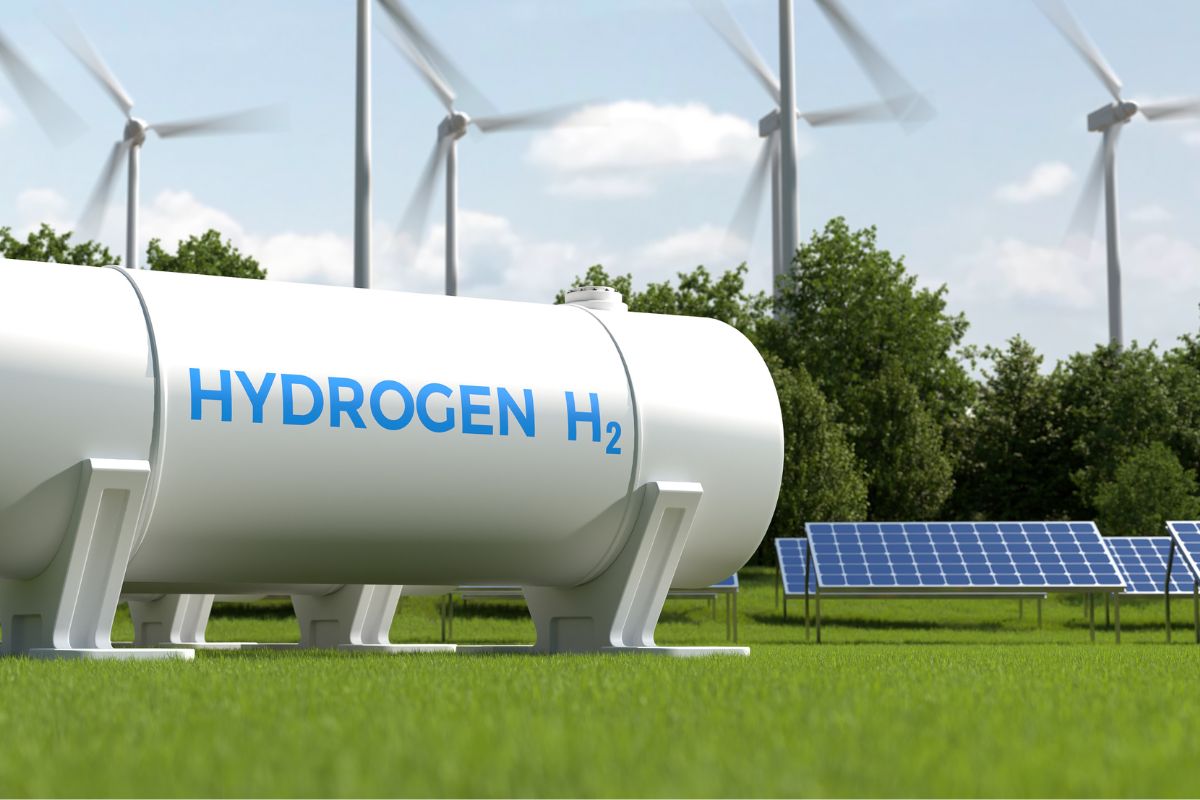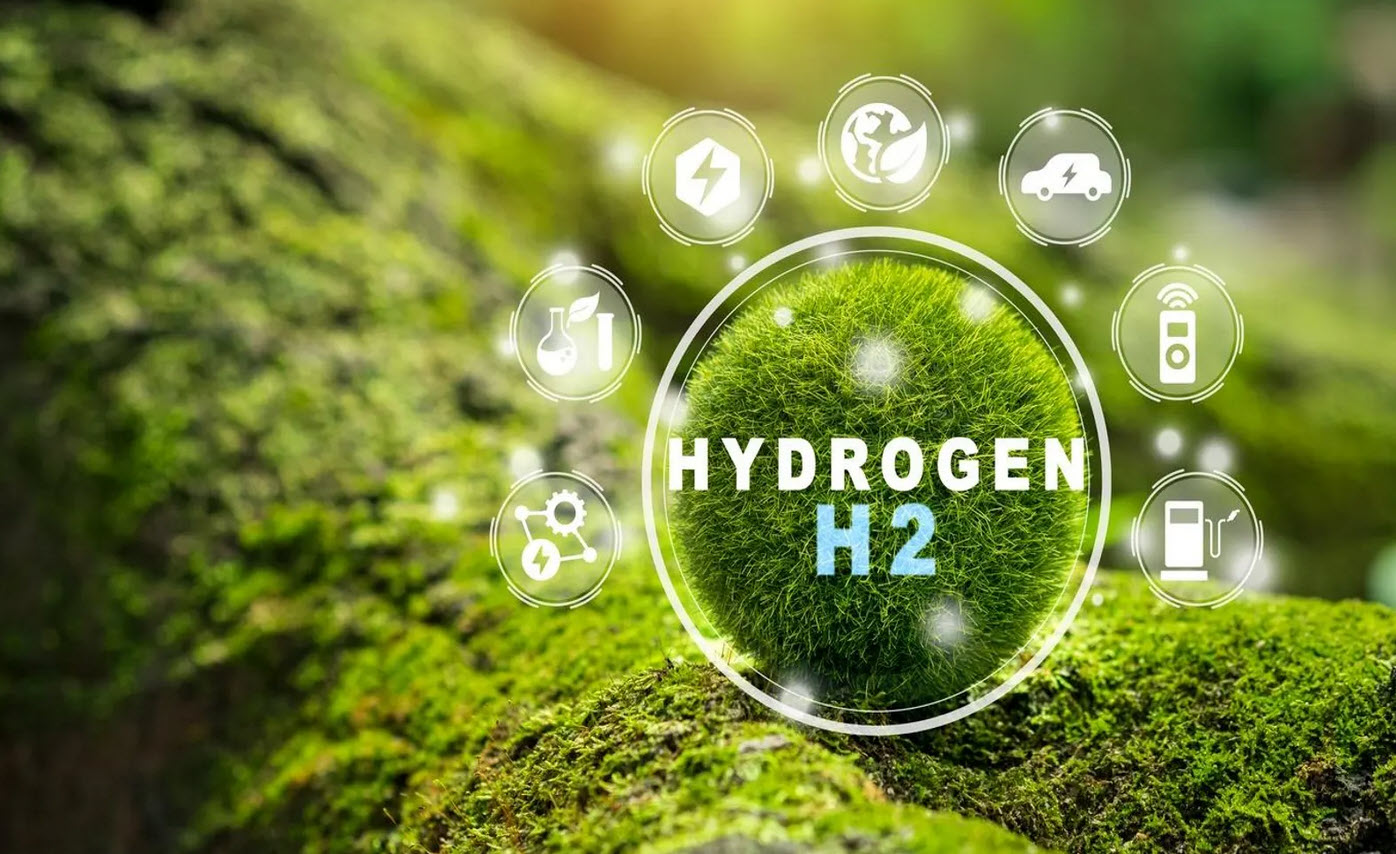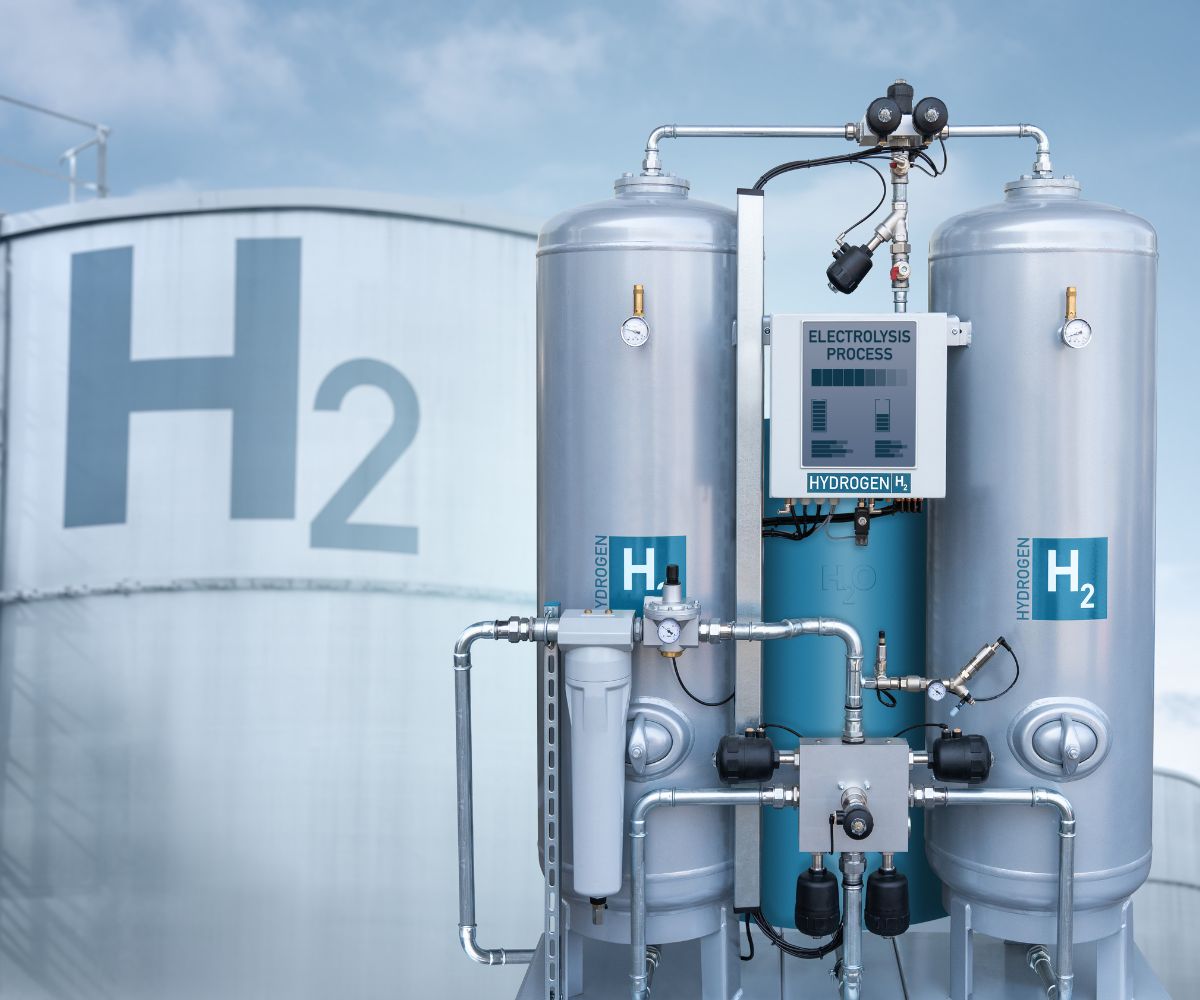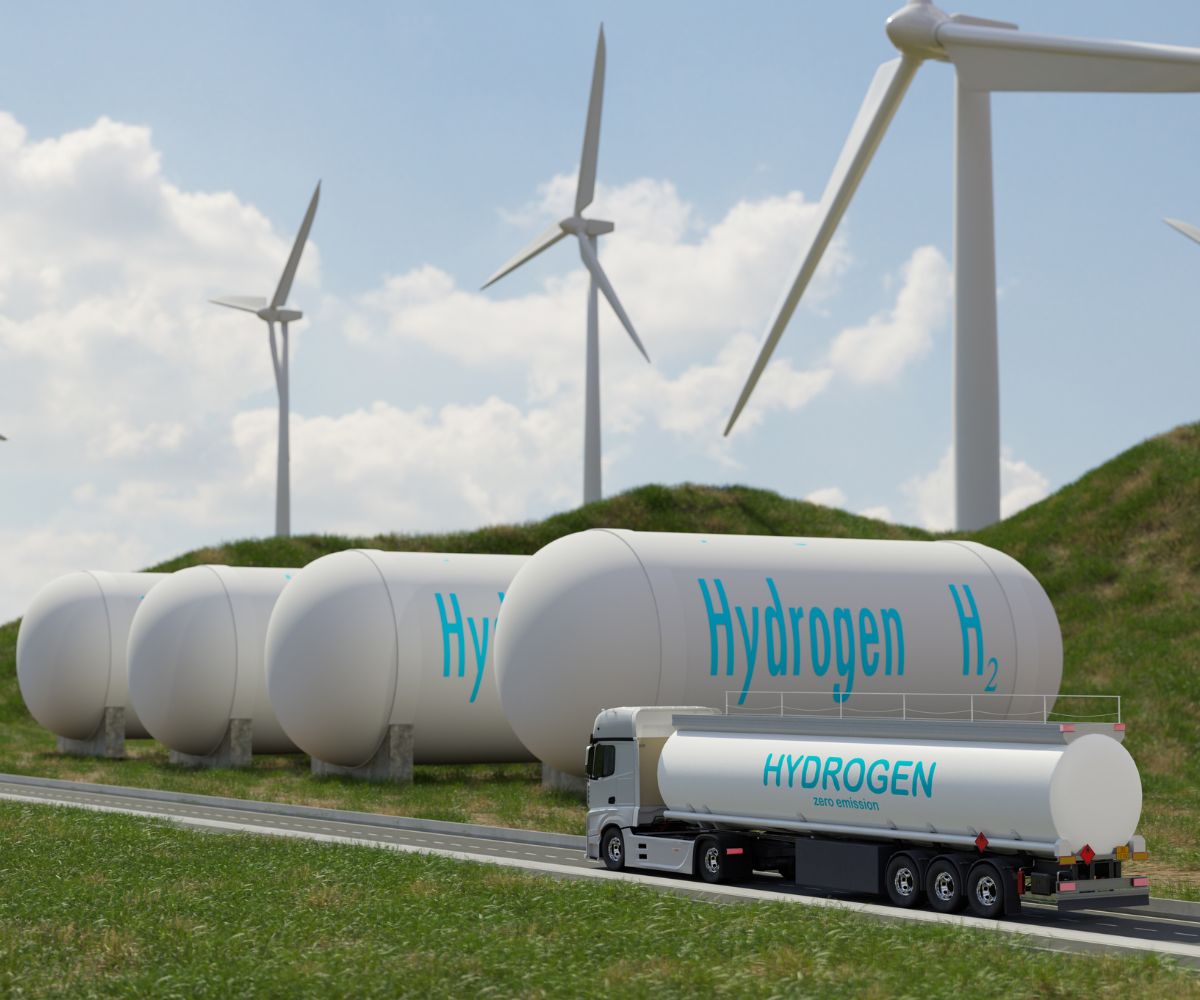
Energizing the Future: How Green Hydrogen Is Transforming the Oil and Gas Sector
November 6, 2023In an era where sustainability is not just a buzzword but a business imperative, the oil and gas industry stands at a pivotal crossroad. Green hydrogen emerges as a beacon of transformation in this landscape, offering a path to decarbonization and energy innovation.
The adoption of green hydrogen—a fuel obtained from the electrolysis of water using renewable energy sources—marks a significant shift in the energy sector. This transition not only highlights the industry’s responsiveness to climate change but also underscores its commitment to investing in sustainable energy solutions.
Brief Overview of Green Hydrogen and Its Significance
Green hydrogen represents a clean energy carrier that could be pivotal in reducing carbon footprints across various industries, especially in the oil and gas sectors where traditional carbon-heavy processes prevail.
Outline of the Shift in the Oil and Gas Industry Towards Sustainable Energy
This paradigm shift is driven by an acute awareness of environmental responsibilities, technological advancements, and a strategic move to diversify energy portfolios in response to global policy changes and market pressures.
What Is Green Hydrogen?
Defining Green Hydrogen and Its Production
Green hydrogen stands out in the energy landscape as a source of clean fuel produced through the electrolysis of water, a process powered by electricity derived from renewable resources like wind, solar, and hydro.
Electrolysis: A process that splits water into oxygen and hydrogen.
Renewable Energy: Electricity sourced from solar, wind, hydro, or other sustainable technologies.
Water: The raw material—abundant and non-polluting—for hydrogen production.
Comparison with Grey and Blue Hydrogen
While green hydrogen is obtained from renewable resources, grey hydrogen is produced from natural gas, and blue hydrogen, although derived from natural gas, involves carbon capture and storage to reduce emissions.
Production Methods: Green hydrogen uses renewable energy, while grey and blue hydrogen is based on fossil fuels.
Environmental Impact: Green hydrogen emits no greenhouse gases, unlike its grey and blue counterparts.
Why Are Oil and Gas Companies Pivoting to Green Hydrogen?
The Role of Sustainability Goals
International sustainability commitments like the Paris Agreement exert significant influence on the industry, steering companies toward greener alternatives to meet global climate targets.
Diversification and Future-Proofing Strategies
The diversification into green hydrogen can be seen as an endeavor to future-proof businesses against the volatility of oil markets and the regulatory environment favoring low-carbon technologies.
Market Drivers: The demand for sustainable energy solutions and low-carbon technologies.
Economic Drivers: Green hydrogen’s potential to tap into new markets and revenue streams.
How Can Green Hydrogen Benefit Oil and Gas Companies?
Economic Advantages
Green hydrogen could provide a competitive edge through government incentives, potentially high demand in a low-carbon future, and the prospect of setting a precedent in a new market.
Government Incentives: Subsidies and tax benefits for adopting green technologies.
Profitability: Potential cost savings and new revenue streams from green hydrogen sales.
Environmental Benefits
Adopting green hydrogen can significantly reduce greenhouse gas emissions, contributing to global efforts to combat climate change and bolstering company images as environmentally responsible entities.
What Are the Challenges Facing Green Hydrogen Integration?
Technological Barriers
The nascent stage of green H2 technology presents challenges such as the need for advancements in electrolysis efficiency and the scaling up of production capacities.
Efficiency: The current rate of hydrogen production via electrolysis needs improvement.
Production Capacity: Scaling up to meet industrial demands is still a technological challenge.
Infrastructure Needs
Developing the requisite infrastructure for green H2 production, such as renewable energy farms and electrolysis plants, necessitates substantial investments and strategic planning.
Market Potential for Green Hydrogen
Current Market Trends
Statistics show a growing interest in green hydrogen, with investments and pilot projects proliferating worldwide, indicating a positive trajectory for market growth.
Investment Trends: Increased funding in green H2 projects.
Pilot Projects: A growing number of pilot projects demonstrating the viability of green hydrogen.
Forecasting the Green Hydrogen Market
Predictive analyses suggest a bullish future for the green hydrogen market, with potential for expansion as technology matures and market acceptance increases.
Growth Projections: Estimates indicate rapid market growth in the coming years.
Technology Maturation: Advancements in technology could reduce costs and increase adoption.
Case Studies: Oil and Gas Companies Investing in Green Hydrogen
The major energy companies in Fort Worth, Texas are not just spectators but active participants in the green hydrogen narrative, with several embarking on landmark projects that could redefine the industry.
Steps Oil and Gas Companies Are Taking Towards Green Hydrogen
Strategic collaborations, research initiatives, and pilot projects are just some of the steps being taken by oil and gas companies as they navigate the green hydrogen space.
Research Partnerships: Collaborations with universities and research institutes.
Pilot Projects: Launching small-scale green hydrogen production to test and learn. 
How Does Green Hydrogen Production Work?
The Science Behind Electrolysis
Electrolysis is the heart of green H2 production, where renewable energy powers the division of water molecules into hydrogen and oxygen.
Water Input: The essential element for producing hydrogen.
Renewable Power: The clean energy source driving the electrolysis process.
Renewable Energy’s Role
The role of renewable energy is crucial in green hydrogen production, determining not just the carbon footprint but also the scalability and sustainability of the hydrogen generated.
Green Hydrogen and Energy Transition
Integrating Green Hydrogen into the Energy Mix
Incorporating green hydrogen into the energy mix involves strategic planning and policy support, positioning it as a cornerstone of the renewable energy landscape.
Strategies: Approaches for integrating green hydrogen with existing energy systems.
Policy Support: The importance of governmental backing in facilitating integration.
Collaboration with Renewable Energy Sectors
Forging partnerships across the renewable energy sectors can streamline the production of green hydrogen, creating a cohesive ecosystem that supports sustainable energy transitions.
Regulatory and Policy Framework for Green Hydrogen
Government Incentives and Support
A robust framework of incentives and regulatory support is pivotal for the growth of the green hydrogen industry, encouraging investment and innovation.
Incentives: Financial and policy mechanisms that stimulate the green hydrogen sector.
Regulatory Support: Governmental policies that promote the development of green hydrogen.
The Need for a Supportive Regulatory Environment
An environment conducive to growth and innovation in green hydrogen production can significantly accelerate industry-wide adoption and technological advancements.
Legislation: Policies that enable the efficient and sustainable production of green hydrogen.
Innovation: Regulations that encourage research and development in green hydrogen technologies.
Financial Considerations for Oil and Gas Companies
Investment and Cost Analysis
Understanding the financial outlay, cost structures, and potential returns is crucial for oil and gas companies venturing into the green hydrogen market.
Cost Breakdown: Analysis of expenses involved in green hydrogen projects.
ROI: Potential returns on investment in green hydrogen infrastructure and technology.
Funding and Financing Models
Exploring a range of funding options, from public-private partnerships to green bonds, can provide the financial backbone for ambitious green hydrogen projects.
Funding Sources: Various financial mechanisms available for green hydrogen initiatives.
Financing Models: Innovative financing structures that can support green hydrogen ventures.
Conclusion
The Oil and Gas Industry at the Forefront of Energy Innovation
As the oil and gas industry continues to pivot towards green hydrogen, it not only redefines its own boundaries but also contributes to the larger narrative of global energy transformation.



 HFN News is your leading source for fresh hydrogen and renewable energy updates. Amid the fast-paced growth of hydrogen companies, we provide top-notch news and insights about this exciting sector. Our coverage spans from hydrogen cars to global sustainable initiatives, and we highlight the latest in green jobs and developing hydrogen hubs. We invite you to share your local hydrogen news and explore today’s renewable energy job listings on our site. Thanks for choosing HFN News as your trusted guide to the hydrogen and renewable energy world!
HFN News is your leading source for fresh hydrogen and renewable energy updates. Amid the fast-paced growth of hydrogen companies, we provide top-notch news and insights about this exciting sector. Our coverage spans from hydrogen cars to global sustainable initiatives, and we highlight the latest in green jobs and developing hydrogen hubs. We invite you to share your local hydrogen news and explore today’s renewable energy job listings on our site. Thanks for choosing HFN News as your trusted guide to the hydrogen and renewable energy world!

In the 1970s, oil and gas giants — e.g., Chevron and Mobil/ExxonMobil — went into partnerships with pioneering photovoltaic startups and then promptly bought them out and stifled all research in solar cells and/or solar ribbons. These oil companies OWNED the sun for years and years and kept the world’s economies dependent on fossil fuels for as long as they could. As far as their newfound enthusiasm for hydrogen goes, I smell a rat.